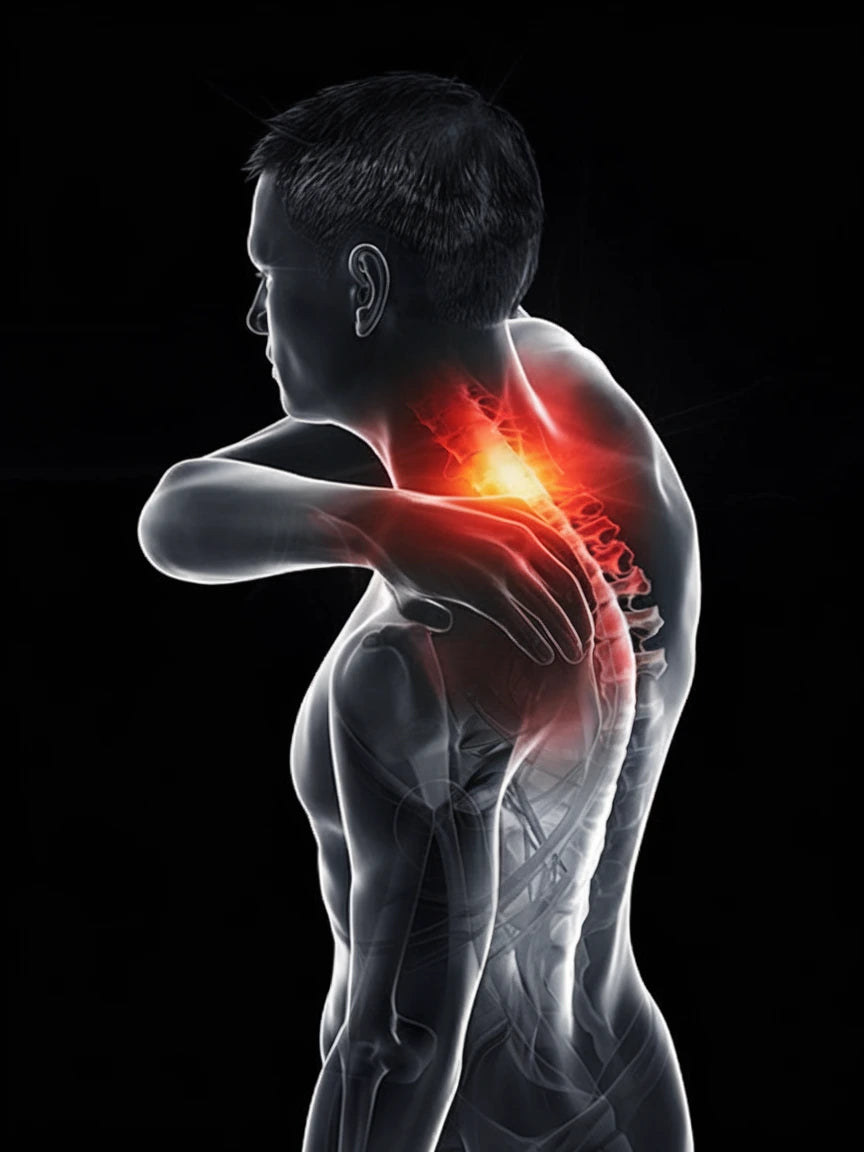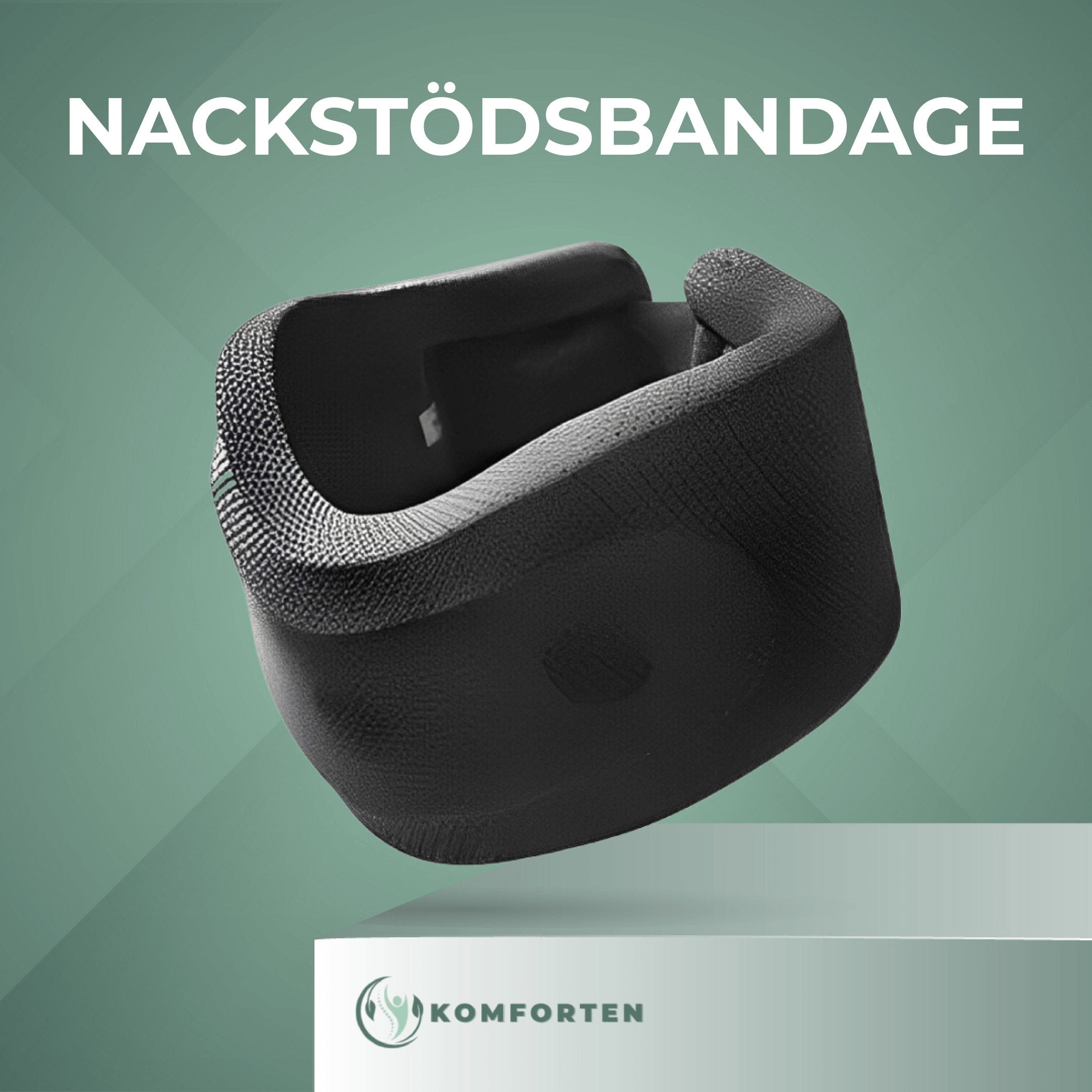Herniated Disc in the Neck: Symptoms, Causes, and Treatment

A herniated disc in the neck is a condition in which a disc between the vertebrae in the neck bulges out and presses on nearby nerves. This can cause pain and other symptoms affecting the neck, shoulders, and arms. A herniated disc in the neck is one of the more common causes of severe neck pain and nerve damage in the upper extremities.
What is a herniated disc in the neck?
A herniated disc in the neck is an injury in which a disc between the vertebrae in the neck bulges out and presses on nerves. When the soft core of the disc (nucleus pulposus) pushes through the outer fibrous covering, it creates compression on surrounding structures, especially nerve roots. This can cause pain, numbness, and stiffness. The condition is often treated with rest, medication, and physical therapy.
Herniated discs most often occur in areas of high mobility and load in the spine. In the neck, herniated discs are particularly common in the neck c5 c6, which can affect nerve function to the shoulder and arm. This condition can sometimes also be related to a neck injury .
This is what a herniated disc in the neck feels like - common symptoms
Common symptoms include:
- Neck pain, often intense and persistent
- Radiating pain from the neck to the shoulder, arm, and hand
- Numbness and tingling in the arm and hand
- Muscle weakness in the arm
- Impaired sensation in parts of the arm or hand
- Increased pain with certain movements, especially when bending the neck forward
The symptoms of a herniated disc in the neck vary depending on which nerve root is affected. Tingling in the hands and feet is a common additional symptom that many patients with nerve damage experience.
What triggers a herniated disc in the neck - common causes
Several factors can contribute to the development of a herniated disc in the neck:
- Age-related wear on the disks
- Overuse or improper strain on the neck
- Sudden injuries or trauma to the neck
- Poor posture for extended periods of time
- Genetic factors
The condition sometimes occurs for no apparent reason, but certain positions and activities increase the risk. It can also be associated with other conditions such as tense shoulders and neck , especially with prolonged static strain.
Diagnosis and treatment of herniated discs in the neck
A herniated disc in the neck occurs when one of the soft discs between the vertebrae presses on the nerves in the cervical spine. This can lead to pain, numbness, or weakness in the neck, shoulders, and arms.
To relieve the discomfort and speed up recovery, there are several effective treatment methods — often in combination with a traction collar that provides relief and support.
Physiotherapy
Physiotherapy is a central part of the treatment of herniated discs in the neck. Targeted exercises strengthen the neck muscles, which reduces the load on the affected discs and improves posture.
Benefit: A traction collar can provide extra relief and support during exercises, helping to reduce pain.
Pain relief
To relieve acute symptoms, anti-inflammatory drugs or over-the-counter painkillers can be used. These reduce inflammation and make it easier to move normally.
Tip: With regular use of a traction collar, the need for medication may decrease thanks to the natural pain relief it offers.
Traction treatment
Traction therapy involves gently stretching the neck to reduce pressure on the nerve roots. This can be done by a physical therapist or using an adjustable traction collar at home.
Benefit: A modern traction collar allows for safe and controlled treatment without a clinic visit – perfect for long-term relief.
Surgery
Surgery is only considered in more severe cases where conservative treatment does not provide sufficient improvement. The aim of the surgery is to remove or reduce the disc pressure that is causing nerve damage.
Note: Early use of a traction collar can in some cases prevent the need for surgery by reducing pressure naturally.

How traction collars can help with herniated discs in the neck
The traction collar from Komforten offers several benefits for people with herniated discs in the neck:
- Provides relief and stretches the neck to reduce pressure on the nerves
- Can be used at home for regular treatment
- Helps improve posture and reduce strain on the neck
- Can contribute to faster healing and pain relief
- Non-invasive alternative to complement other treatment methods
Many patients with a herniated disc in the neck are on sick leave during the acute phase. A traction collar can be a valuable tool in managing symptoms during recovery. It supports the natural curve of the neck and helps relieve pressure on the herniated disc during the healing process.
Buy nowSummary and prognosis for herniated discs in the neck
Herniated discs in the neck can be a painful and limiting condition, but with proper diagnosis and treatment, most people can experience significant improvements. By combining conservative treatment methods such as physical therapy and the use of assistive devices such as traction collars, many can effectively manage their symptoms and improve their quality of life.
The condition can sometimes be confused with or coexist with neck muscle strain , making an accurate diagnosis important.
Frequently Asked Questions (FAQ)
How long does it take for a herniated disc in the neck to heal?
Healing time varies, but many people experience improvement within 4-6 weeks with the right treatment.
Can I exercise with a herniated disc in my neck?
Light exercise and specific exercises are often recommended as part of treatment. Herniated disc exercises in the neck should focus on strengthening the neck muscles without overloading the damaged disc. Consult a physical therapist for a customized program.
How do I use the traction collar for a herniated disc in the neck?
Follow the instructions provided with the product and consult your doctor or physical therapist for personal recommendations. The collar should not usually be worn continuously throughout the day.
Is surgery always necessary for a herniated disc in the neck?
No, most cases of herniated discs in the neck can be treated conservatively without surgery. Surgery is usually only considered when other treatments have failed or in cases of severe nerve damage.
Can the traction collar prevent future herniated discs?
While the traction collar is primarily used for treatment, regular use can potentially help prevent overuse and reduce the risk of future problems. However, it is important to combine this with exercise and good ergonomics.

